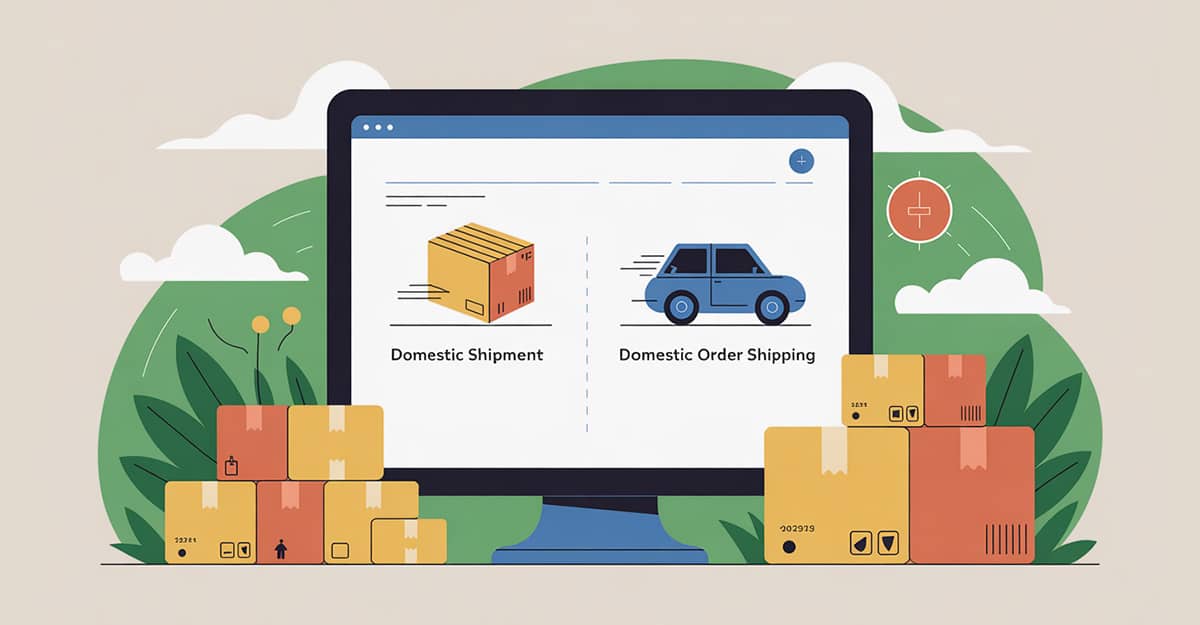When it comes to moving goods within the same country, people often use the terms domestic shipment and domestic order shipping interchangeably. While both deal with transportation inside national borders, they are not exactly the same. Each has its own purpose, process, and target audience. For businesses and individuals, understanding the differences can mean the difference between efficient operations and unnecessary expenses.
This blog will break down the key differences, explain how each works, and help you decide which option best suits your needs.
What Is a Domestic Shipment?
Domestic shipment refers to the large-scale movement of goods from one location to another within the same country. Imagine a manufacturer sending thousands of units from a factory in Chicago to a distribution warehouse in Dallas—that’s a classic example of a domestic shipment.
The focus here is on logistics and efficiency, often involving larger quantities of goods. Domestic shipment can be handled through trucking companies, rail transport, or even domestic air cargo when urgent. Because it is designed for bulk movement, businesses often partner with domestic freight services to ensure goods are moved safely and cost-effectively.
Another characteristic of domestic shipment is that it often requires proper documentation, such as invoices, bills of lading, or contracts between suppliers and distributors. Unlike international shipping, though, you won’t deal with customs clearance or tariffs, making it faster and simpler.
What Is Domestic Order Shipping?
Now, let’s consider domestic order shipping. This term applies to retail and e-commerce transactions where goods move from a seller or warehouse directly to the customer’s doorstep. For example, when a customer buys a pair of shoes online, the company packs the product and arranges delivery through a courier service. That process is domestic order shipping.
Here, the emphasis is on customer satisfaction. Customers expect fast and reliable delivery, often with tracking options. Businesses, therefore, look for affordable and efficient delivery solutions. Many opt for affordable domestic shipping to cut operational costs without sacrificing quality.
Unlike bulk shipments, domestic order shipping involves smaller packages, different delivery timelines, and more interaction with last-mile carriers like courier companies or postal services.
Key Differences Between Domestic Shipment and Domestic Order Shipping
Although both terms involve moving goods within the same country, their differences are important:
1. Scale of Goods
- Domestic shipment: Large-scale or bulk transportation.
- Domestic order shipping: Small-scale, individual packages or retail orders.
2. Target Users
- Domestic shipment: Wholesalers, manufacturers, or distributors moving products in bulk.
- Domestic order shipping: eCommerce sellers, small businesses, or retailers delivering directly to end customers.
3. Delivery Priorities
- Domestic shipment: Focused on logistics planning, cost optimization, and transport safety.
- Domestic order shipping: Focused on speed, tracking, and customer satisfaction.
4. Service Providers
- Domestic shipment: Freight carriers, trucking companies, and logistics providers.
- Domestic order shipping: Couriers, postal services, and local delivery companies.
5. Cost Structure
- Domestic shipment: Pricing depends on volume, weight, and distance.
- Domestic order shipping: Pricing depends on package size, delivery speed, and courier choice.
Why the Distinction Matters
Understanding the difference is crucial for businesses. A wholesaler shipping thousands of items across states would waste money if they used a retail delivery service for every order. On the other hand, an online seller would frustrate customers if they relied only on freight carriers instead of quick courier options.
Clarity between these two ensures that businesses can allocate resources correctly, reduce delivery errors, and provide better customer experiences. Retail businesses, in particular, benefit from efficient order shipping strategies, while manufacturers rely on bulk domestic shipment to streamline supply chains.
Benefits of Each Option
Benefits of Domestic Shipment
- Cost savings for large quantities.
- Flexible transport modes (road, rail, or air).
- Streamlined supply chain management.
Benefits of Domestic Order Shipping
- Faster delivery to customers.
- More flexibility in package handling.
- Easier tracking and better customer satisfaction.
Both approaches are essential for a complete logistics strategy, and many businesses actually use a combination of both.
Choosing the Right Solution
When deciding between the two, consider the following:
- Type of goods – Bulk loads vs. individual packages.
- Delivery speed – Is it urgent for customers or part of a long-term supply chain?
- Cost efficiency – Are you optimizing shipping costs based on quantity or delivery frequency?
Providers like SFL Worldwide understand these differences and offer tailored solutions for both small order deliveries and large shipments. Whether you’re an eCommerce brand focusing on customer satisfaction or a manufacturer moving goods across states, their expertise ensures smooth and reliable operations.
Final Thoughts
While domestic shipping may seem like a broad term, it’s important to recognize the distinction between domestic shipment and domestic order shipping. One focuses on logistics and bulk transportation, while the other centers on fulfilling customer expectations for individual orders.
If your business needs support with either large-scale distribution or customer-focused delivery, working with an experienced logistics partner can make all the difference. Companies like SFL Worldwide provide flexible domestic shipping services designed to meet both business and customer needs.
Don’t let logistics challenges hold you back. Find the solution that fits your operations, improve efficiency, and keep your customers happy.
Get a Quote today and simplify your shipping strategy.

I’m Tammy Waller, a supply chain and logistics specialist with over 10 years of expertise. I’ve been an author and SFL employee for over 10 years.
As an author, I’ve been able to teach others. I love guiding users through supply chain and logistics operations.
I have substantial experience managing logistics operations, supply chain management, transportation, inventory management, and warehousing in shipping-moving and logistic services. I’ve worked on many worldwide logistics and supply chain projects, honing my abilities in negotiating rates, scheduling shipments, and managing vendors.



